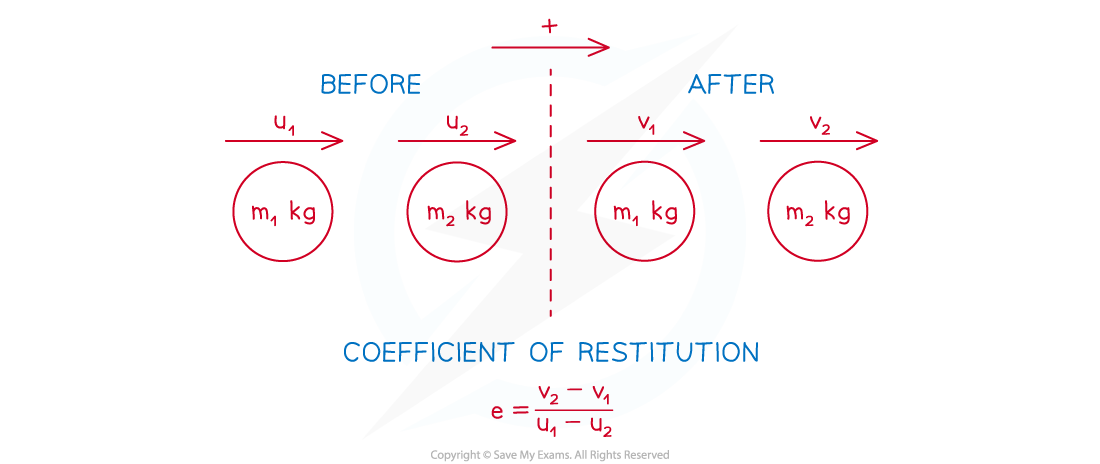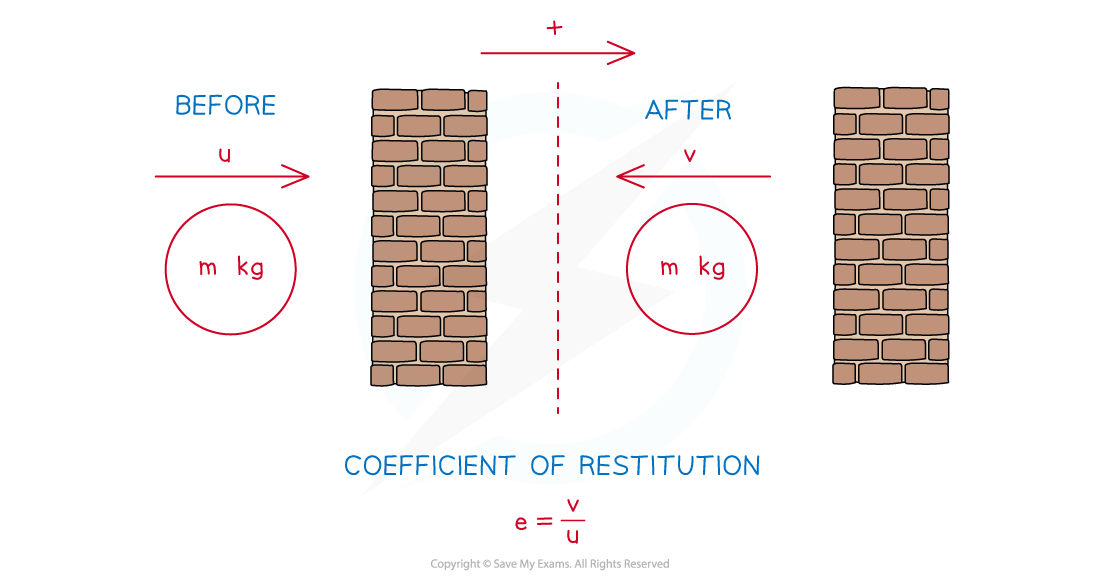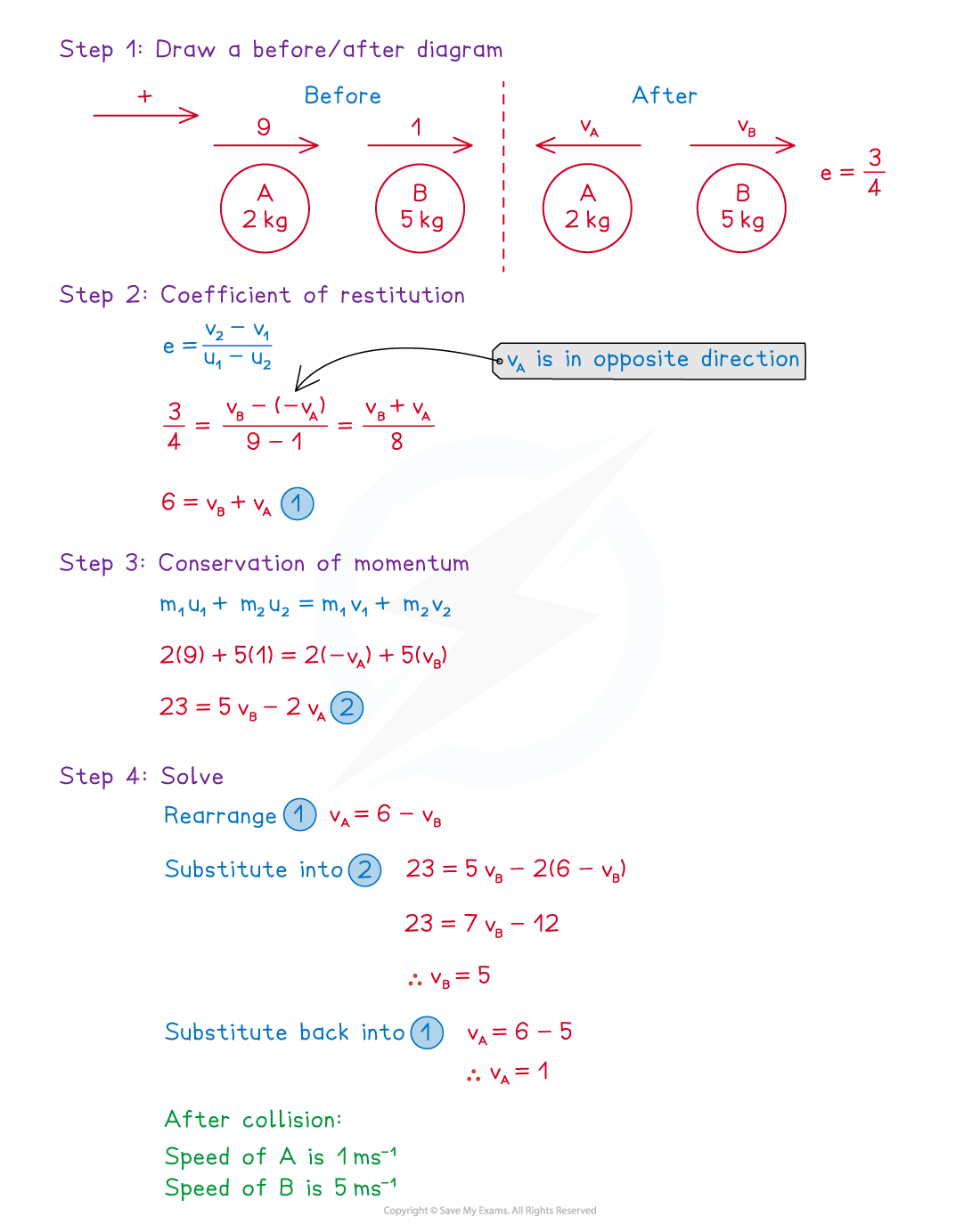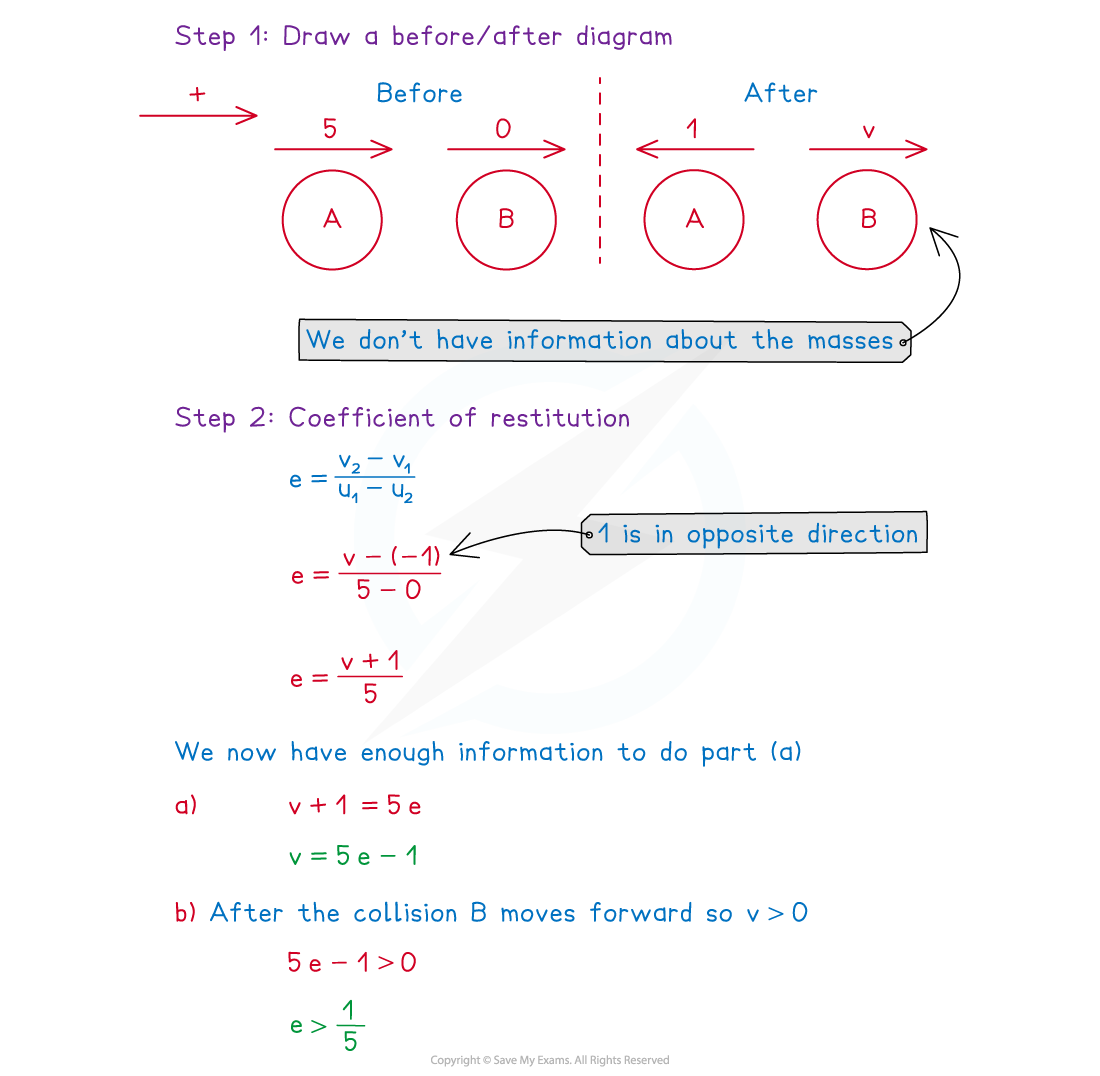Coefficient of Restitution (Edexcel International A Level (IAL) Maths): Revision Note
Exam code: YMA01
Did this video help you?
Coefficient of Restitution
What is the coefficient of restitution?
The coefficient of restitution (also known as Newton's Experimental Law) is the ratio of the relative speed of separation and the relative speed of approach when two objects collide
Essentially this just means the speed of separation divided by the speed of approach
The coefficient of restitution is denoted e
e is dimensionless as it is a ratio
The value of e in a particular situation will depend on the materials that the two particles are made from
In this course e can take the values in the range 0 ≤ e ≤ 1
e =1: These are called perfectly elastic collisions and in these collisions there is no loss in kinetic energy
e =0: These are called perfectly inelastic collisions and in these collisions the objects coalesce
How do I calculate the coefficient of restitution between two objects?
The speed of approach depends on whether the objects are travelling towards each other or in the same direction. For example, if the speeds of the two objects before the collision are 5 m s-1 and 2 m s-1 then the speed of approach is:
3 m s-1 if they are moving in the same direction (each second the objects approach each other by a further 3 metres)
7 m s-1 if they are moving in opposite directions (each second the objects approach each other by a further 7 metres)
The speed of separation depends on whether the objects are travelling away from each other or in the same direction. For example, if the speeds of the two objects after the collision are 5 m s-1 and 2 m s-1 then the speed of separation is:
3 m s-1 if they are moving in the same direction (each second the objects separate by a further 3 metres)
7 m s-1 if they are moving in opposite directions (each second the objects separate by a further 7 metres)
If the velocities of the two objects before the collision are u1 m s-1 and u2 m s-1 and the velocities after the collision are v1m s-1 and v2 m s-1 then:
Note that velocities can be negative so be careful with signs

How do I calculate the coefficient of restitution between an object and a wall?
As the wall does not have any velocity
If the speed of the object before the hitting the wall is u m s-1 and the speed after is v m s-1 then the formula above simplifies to:

How do I solve collision problems involving the coefficient of restitution?
STEP 1: Draw a before/after diagram and label the positive direction
There may be multiple diagrams if there are multiple collisions
STEP 2: Form an equation using the coefficient of restitution
The unknown(s) could be the coefficient of restitution or any of the speeds or directions
STEP 3: Form an equation using the principle of conservation of momentum
In the case of a collision with a wall you may be given the impulse or some other information instead
STEP 4: Solve and give your answer in context
You may have to solve simultaneous equations
You may have to solve an inequality
You may have to form an inequality using 0 ≤ e ≤ 1 or using the fact that velocity is positive (or negative) if the object is going forwards (or backwards)
Worked Example
Two balls and
are of equal radius and have masses 2 kg and 5 kg respectively.
and
collide directly. Immediately before the collision,
and
are moving in the same direction along a straight line on a smooth horizontal surface with speeds 9
and
respectively. Immediately after the collision, the direction of motion of
is reversed. The coefficient of restitution between
and
is
.
Find the speeds of and
immediately after the collision.

Worked Example
A sphere is projected with speed
along a straight line towards another sphere
, of equal radius, which is at rest on a smooth horizontal surface. After the collision,
moves with speed
and
moves in the opposite direction with speed
. The coefficient of restitution between
and
is
.
(a) Show that .
(b) Hence, find the range of possible values of e.

Examiner Tips and Tricks
Exam questions refer to spheres as having equal radii, this just means the objects are the same size so that dimensions don't affect the collision. Exam questions often leave velocities in terms of e . If you know the direction of the object then you know whether the velocity is positive or negative. This can be used to form an inequality for the range of possible values of e for that scenario.

Unlock more, it's free!
Did this page help you?